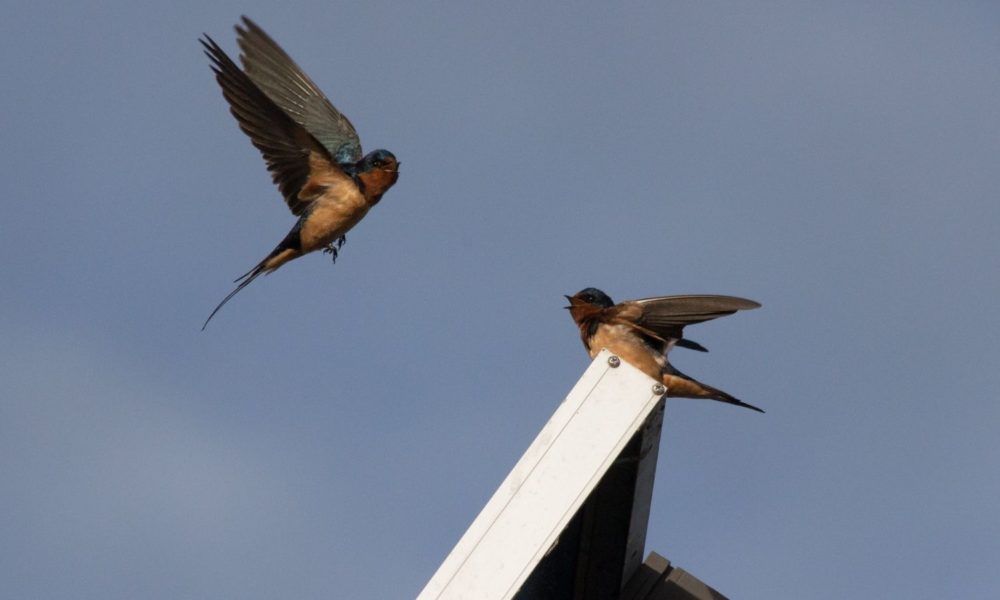The American Wind Wildlife Institute (AWWI) has just become the Renewable Energy Wildlife Institute (REWI). That’s a good thing, and a sign of even better things to come.
AWWI, now REWI (pronounced “ree-why”), is a unique organization that brings together key stakeholders committed to expanding the scale and role of renewable energy in our power supply, while addressing wildlife and habitat issues at the same time.
The organization has been funding critical field research to help close gaps in understanding of the impacts of renewables on wildlife and habitat. And it has been sharing those findings broadly to better inform siting and permitting decisions around particular projects, and to spur innovations in avoiding and minimizing impacts. It has also served as a convenor of those key stakeholders to ensure better communication and coordination of research findings and needs.
UCS has been an active part of this effort since AWWI’s inception. We helped launch AWWI in 2008 because we saw the importance of bringing science to bear on wildlife issues and opportunities in the scale-up of wind power. And because we saw the power of partnering with conservation organizations and the wind industry to make that happen.
Solar, too, presents wildlife opportunities
Now REWI is bringing that focus on science and the power of those partnerships to solar too, to ensure even more a responsible and sustainable renewable energy transition.

“Solar is a vital renewable energy solution to reduce carbon emissions that threaten wildlife, so this is a significant and timely change,” explains Jim Murphy of the National Wildlife Federation, chair of the REWI board. “REWI’s expertise in facilitating collaborative, science-based solutions to wind-wildlife challenges makes it uniquely well-positioned to answer similar, pressing questions about the potential impacts of solar on wildlife.”
In 2008, wind power was where the action in clean energy was. Solar power was really small potatoes (despite my best efforts, since it’s where I got my start 30 years ago).
Things are different now. Wind is big and growing. Solar is growing even faster now and catching up quickly. Both had record years in 2021, and when we see the final generation numbers for the year they’ll likely have added up to close to 12 percent of US electricity supply.
And we’re counting on both wind and solar to do a lot more, and in the very near term, and far beyond.
So expanding AWWI’s remit and transforming it to REWI seems a great move. It’s also consistent with other recent steps to recognize the synergies to be had in addressing a range of technologies for the clean energy transition, such as the American Wind Energy Association’s rebranding as the American Clean Power Association last year, and subsequent merger with the Energy Storage Association.
Strength in numbers, and science
A lot of others agree on REWI’s importance: The organization is backed by more than 40 partners and friends—organizations and companies that share a commitment to, as REWI’s mission statement says, “facilitate timely and responsible development of wind and solar energy while protecting wildlife and wildlife habitat.”
“Renewable energy is central to the fight against climate change,” says Abby Arnold, REWI’s executive director, “and the level of buildout that’s needed can’t happen unless we have the knowledge to inform choices about the best ways to balance the desire for carbon-free power with conservation goals. REWI provides science we can stand on when making those critical decisions.”
UCS is proud to stand behind REWI. And we look forward to continuing to work with our partners to find ways to sustainably expand renewable energy while protecting wildlife and habitat.
For more on the history of AWWI and UCS’s involvement, read my 2018 interview with Abby Arnold here: Birds, Bats, and Wind Power: An Interview with Abby Arnold of the American Wind Wildlife Institute

